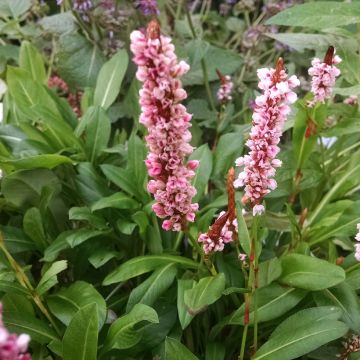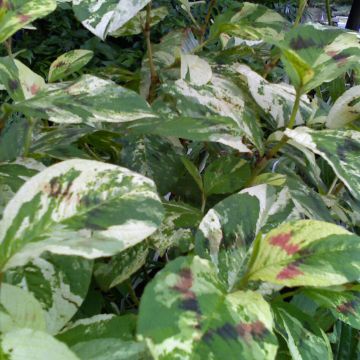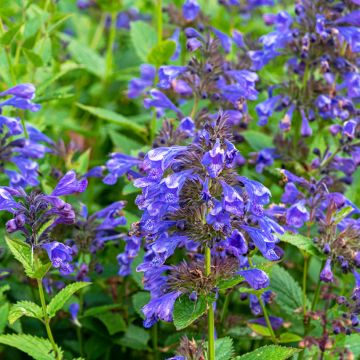

Renouée - Persicaria dshawachischwilii
Persicaria dshawachischwilii
Persicaria dshawachischwilii
Alpine Knotweed
Special offer!
Receive a €20 voucher for any order over €90 (excluding delivery costs, credit notes, and plastic-free options)!
1- Add your favorite plants to your cart.
2- Once you have reached €90, confirm your order (you can even choose the delivery date!).
3- As soon as your order is shipped, you will receive an email containing your voucher code, valid for 3 months (90 days).
Your voucher is unique and can only be used once, for any order with a minimum value of €20, excluding delivery costs.
Can be combined with other current offers, non-divisible and non-refundable.
Home or relay delivery (depending on size and destination)
Schedule delivery date,
and select date in basket
This plant carries a 12 months recovery warranty
More information
We guarantee the quality of our plants for a full growing cycle, and will replace at our expense any plant that fails to recover under normal climatic and planting conditions.
Would this plant suit my garden?
Set up your Plantfit profile →
Description
The Persicaria dshawachischwilii is a perennial knotweed native to Georgia, rarely cultivated, somewhat similar to the species Persicaria polymorpha and P. alpina, but smaller and slower-growing. This non-invasive plant forms a bushy clump adorned with long, narrow leaves, and its delicate cream-coloured flowering is both early and prolonged, from spring to summer. It thrives in a sunny to partially shaded flower bed, in moist but well-drained soil. A plant for collectors!
The Persicaria dshawachischwilii is a plant in the family of polygonaceae. It is probably a subspecies or a form collected in Georgia related to Koenigia alpina, now renamed Aconogonon alpina, a botanical species naturally present in a vast Eurasian zone. In any case, it is a beautiful plant highly resistant to cold. This deciduous perennial plant loses its above-ground vegetation in winter and regrows in spring. It slowly forms a clump of about 1m (3ft) in all directions, sometimes 1.20m (4ft) depending on the growing conditions. The stems bear numerous elongated and slender leaves, of a fairly light green. Flowering begins in May-June, more or less early depending on the climate, and continues until July. The plant produces numerous branched spikes composed of a multitude of small creamy-white flowers in the axil of the leaves, located at the end of the stems.
Like astrantias, knotweeds are very popular plants due to their good adaptation to cold and humid climates and their sleek appearance that suits both contemporary gardens and rustic and romantic flower beds. They create stunning autumn scenes when combined with grasses such as Miscanthus and Panicum. Thanks to its clump habit, Persicaria dshawachischwilii can be associated with many perennials or small bushes, ensuring it is given enough space. This knotweed enjoys both sun and partial shade. Asters, Japanese anemones, and inulas are good companions for persicarias in the garden or in bouquets, as they also flower until autumn. Dead nettles and bergenias, equally robust, allow for extended periods of flowering and play with the contrast of shapes and foliage.
Report an error about the product description
Persicaria dshawachischwilii in pictures


Flowering
Foliage
Plant habit
Botanical data
Persicaria
dshawachischwilii
Polygonaceae
Alpine Knotweed
Caucasus
Other Persicaria
View all →Planting and care
The Persicaria dshawachischwilii thrives in sunny or semi-shaded exposure. It is a slow-growing plant that develops in fairly rich, moist but loose and well-drained soils. Enrich the soil with organic fertilizer at the start of growth, as it is a fairly voracious plant. Mulch the soil in June in regions where the summer is hot and dry. Prune dry stems in April.
Planting period
Intended location
Care
This item has not been reviewed yet - be the first to leave a review about it.
Similar products
Haven't found what you were looking for?
Hardiness is the lowest winter temperature a plant can endure without suffering serious damage or even dying. However, hardiness is affected by location (a sheltered area, such as a patio), protection (winter cover) and soil type (hardiness is improved by well-drained soil).

Photo Sharing Terms & Conditions
In order to encourage gardeners to interact and share their experiences, Promesse de fleurs offers various media enabling content to be uploaded onto its Site - in particular via the ‘Photo sharing’ module.
The User agrees to refrain from:
- Posting any content that is illegal, prejudicial, insulting, racist, inciteful to hatred, revisionist, contrary to public decency, that infringes on privacy or on the privacy rights of third parties, in particular the publicity rights of persons and goods, intellectual property rights, or the right to privacy.
- Submitting content on behalf of a third party;
- Impersonate the identity of a third party and/or publish any personal information about a third party;
In general, the User undertakes to refrain from any unethical behaviour.
All Content (in particular text, comments, files, images, photos, videos, creative works, etc.), which may be subject to property or intellectual property rights, image or other private rights, shall remain the property of the User, subject to the limited rights granted by the terms of the licence granted by Promesse de fleurs as stated below. Users are at liberty to publish or not to publish such Content on the Site, notably via the ‘Photo Sharing’ facility, and accept that this Content shall be made public and freely accessible, notably on the Internet.
Users further acknowledge, undertake to have ,and guarantee that they hold all necessary rights and permissions to publish such material on the Site, in particular with regard to the legislation in force pertaining to any privacy, property, intellectual property, image, or contractual rights, or rights of any other nature. By publishing such Content on the Site, Users acknowledge accepting full liability as publishers of the Content within the meaning of the law, and grant Promesse de fleurs, free of charge, an inclusive, worldwide licence for the said Content for the entire duration of its publication, including all reproduction, representation, up/downloading, displaying, performing, transmission, and storage rights.
Users also grant permission for their name to be linked to the Content and accept that this link may not always be made available.
By engaging in posting material, Users consent to their Content becoming automatically accessible on the Internet, in particular on other sites and/or blogs and/or web pages of the Promesse de fleurs site, including in particular social pages and the Promesse de fleurs catalogue.
Users may secure the removal of entrusted content free of charge by issuing a simple request via our contact form.
The flowering period indicated on our website applies to countries and regions located in USDA zone 8 (France, the United Kingdom, Ireland, the Netherlands, etc.)
It will vary according to where you live:
- In zones 9 to 10 (Italy, Spain, Greece, etc.), flowering will occur about 2 to 4 weeks earlier.
- In zones 6 to 7 (Germany, Poland, Slovenia, and lower mountainous regions), flowering will be delayed by 2 to 3 weeks.
- In zone 5 (Central Europe, Scandinavia), blooming will be delayed by 3 to 5 weeks.
In temperate climates, pruning of spring-flowering shrubs (forsythia, spireas, etc.) should be done just after flowering.
Pruning of summer-flowering shrubs (Indian Lilac, Perovskia, etc.) can be done in winter or spring.
In cold regions as well as with frost-sensitive plants, avoid pruning too early when severe frosts may still occur.
The planting period indicated on our website applies to countries and regions located in USDA zone 8 (France, United Kingdom, Ireland, Netherlands).
It will vary according to where you live:
- In Mediterranean zones (Marseille, Madrid, Milan, etc.), autumn and winter are the best planting periods.
- In continental zones (Strasbourg, Munich, Vienna, etc.), delay planting by 2 to 3 weeks in spring and bring it forward by 2 to 4 weeks in autumn.
- In mountainous regions (the Alps, Pyrenees, Carpathians, etc.), it is best to plant in late spring (May-June) or late summer (August-September).
The harvesting period indicated on our website applies to countries and regions in USDA zone 8 (France, England, Ireland, the Netherlands).
In colder areas (Scandinavia, Poland, Austria...) fruit and vegetable harvests are likely to be delayed by 3-4 weeks.
In warmer areas (Italy, Spain, Greece, etc.), harvesting will probably take place earlier, depending on weather conditions.
The sowing periods indicated on our website apply to countries and regions within USDA Zone 8 (France, UK, Ireland, Netherlands).
In colder areas (Scandinavia, Poland, Austria...), delay any outdoor sowing by 3-4 weeks, or sow under glass.
In warmer climes (Italy, Spain, Greece, etc.), bring outdoor sowing forward by a few weeks.



















































